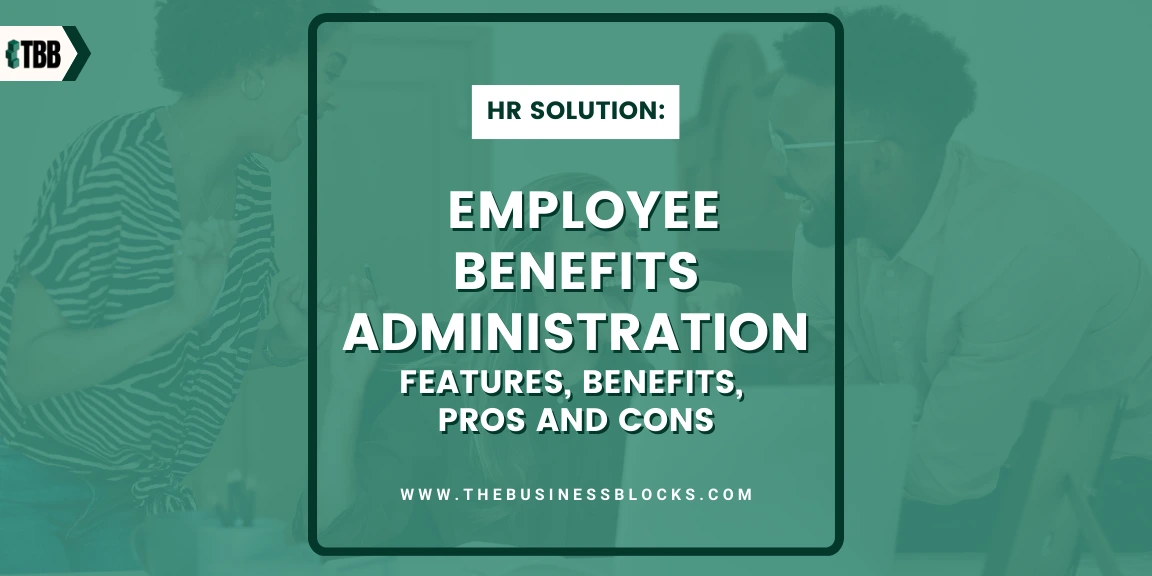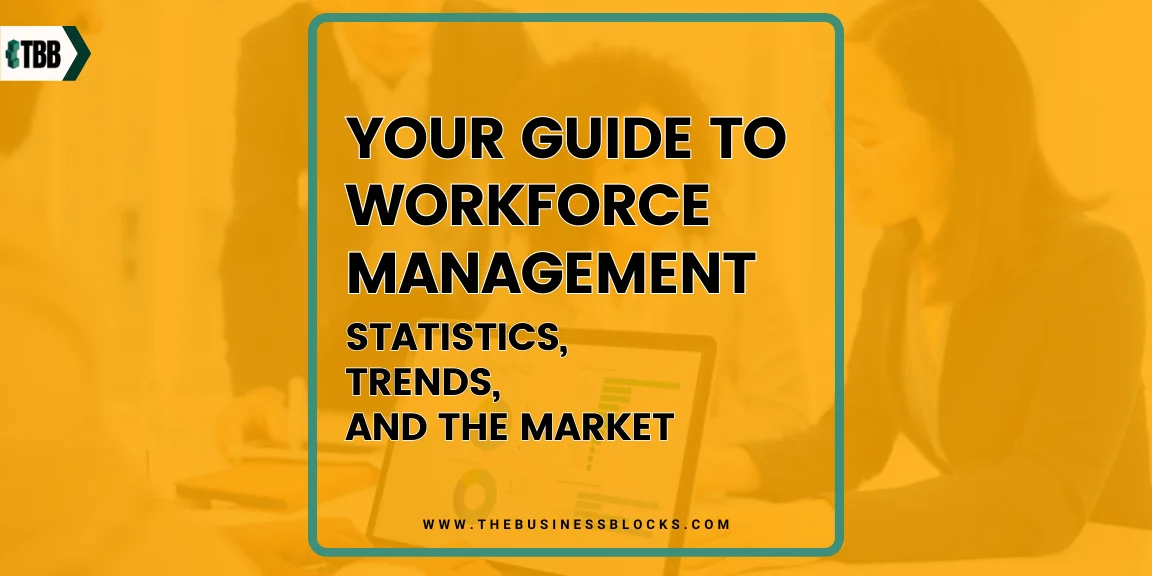The termination process refers to the steps taken by an organization to end an employee’s employment, either voluntarily or involuntarily. This process typically includes conducting exit interviews, collecting company property, and providing final pay and benefits. In cases of involuntary termination, such as for performance or misconduct, the process may involve documentation of the reasons for termination and legal compliance with relevant laws and regulations. Effective management of the termination process requires sensitivity, clear communication, and adherence to relevant policies and procedures. Properly managing the termination process can help to minimize the risk of legal or reputational issues, maintain positive employee relations, and support the long-term success of the business.
Category: Human Resources
Running Payroll
Running payroll is the process of calculating and distributing employee compensation, including wages, salaries, bonuses, and benefits. This process typically involves collecting and processing employee time and attendance data, calculating gross pay, deducting taxes and other withholdings, and distributing net pay to employees. Effective management of running payroll requires attention to detail, accuracy, and compliance with relevant laws and regulations governing payroll processing, as well as proficiency with relevant payroll software and tools. Properly managing running payroll can help to ensure timely and accurate payment of employees, minimize the risk of errors or compliance issues, and support positive employee relations by ensuring that employees are paid fairly and on time.
Related terms about Human Resources
Employee Onboarding
Employee onboarding is integrating new employees into the organization and helping them acclimate to their new roles and work environment. This process involves various activities, including orientation, training, and socialization, and may extend over several weeks or months. Effective management of employee onboarding requires careful planning, communication, and coordination across different departments and stakeholders, as well as a commitment to providing a positive and supportive experience for new employees. Properly managing employee onboarding can help promote employee retention, reduce turnover, and support the business’s long-term success by ensuring that new hires have the tools and resources they need to succeed.
Related terms about Human Resources
New Hire Orientation
New hire orientation is the process of introducing new employees to the company’s culture, policies, procedures, and expectations. This process typically takes place during the first few days or weeks of a new employee’s employment, and may include information on the company’s history, values, and mission, as well as training on specific job duties and responsibilities. Effective management of new hire orientation requires clear communication, organization, and planning, as well as a commitment to providing a positive and welcoming experience for new employees. Properly managing new hire orientation can help to promote employee engagement, reduce turnover, and support the long-term success of the business.
Related terms about Human Resources
Your Ultimate Guide to Benefits Administration Software Features
A benefits administration software is a software utility that enables employers to manage and administer their organizations’ employee benefits.
These tools can aid companies in streamlining processes such as assessing employee benefits packages, creating benefits packages, enrolling employees into benefits plans, tracking eligibility and availability, and tracking distribution management.
HR managers or specific staff have the role of administering employee benefits packages.
This software may also include tools and means for communications, health insurance plans, messaging, and voluntary benefits program enrolment. The use of benefits administration delivery tools can assist companies in automating tasks about benefits and even allow the deployment of self-service portals.
Admittedly, benefits management and administration is a complicated domain in HR and involves many facets concerning employee and employer relationships.
This is where benefits administration can be useful, as these tools can help organizations streamline the benefits administration process through automation tools.
Management of employee benefits could be expensive. It is a time-consuming facet and necessitates a lot of logistical considerations.
What features are essential when selecting a business’s apt benefits administration software?

A competitive salary package and attractive benefits programs may help businesses attract new hires, retain talent, and help alleviate worries and employees’ anxiety during difficult times, just like what has been experienced during the worst times of the COVID-19 pandemic.
What administration software are you using?
We review 8 benefits administration (BA) services that can help with other HR tasks.
Benefits administrators and human resources personnel can be fully empowered through the use of intuitive benefits management software to easily identify, manage and track the usage of benefits and amenities they offer in an organization.
An effectively managed benefits program may solve issues with staff and resources. Having functionally rich and easy-to-use software could help employers and employees maximize the use of HR tools and benefits.
Standalone Benefits Administration Software
Several options are available when choosing an organization’s ideal benefits administration software. Some HRIS platforms already come with built-in benefits administration features.
A standalone and customizable software might be the perfect solution for those with bespoke requirements. Some utilities are cloud-based, while the rest are implemented on-premise.
The following are the essential features that should be supported by the tool that an organization will choose to employ.
Feature 1: Payroll Processing and Integration
The process of calculating and distributing wages, salaries, and all matters compensation to employees, which typically involves calculating the total amount of pay due to each employee, is an arduous and complicated task where a lot of factors come into play, such as the number of hours worked, overtime, deductions, among others.
Payroll processing is an important function and should be done accurately and promptly. This may also entail other compliance tasks, such as preparing and filing necessary tax return documents and unemployment insurance reports.
A good benefits administration tool includes compliance management, employee self-service, and business intelligence tools. These benefits administration systems can process automatic payroll deductions, management, and employee welfare programs as standard.
Implementing payroll with manual workflows or limited software might pose a risk for the business and lead to delays or issues with the amount employees will receive. It could even lead to penalties from labor governing bodies.
When a system where payroll is seamlessly integrated with benefits management, an organization may benefit immensely with gains such as efficiency, accuracy, and accessibility.
Manual processes can be avoided or eliminated when payroll and benefits are automated through software, and increased administrative efficiency can be achieved. Benefits administrators and HR personnel could then focus on other important tasks, saving resourcing and time.
Another benefit of having a seamless ecosystem of HR tools can ensure that information, sensitive information at that, can be transferred easily, securely, and accurately. There will be no manual input, and input and data errors can easily be avoided.
Finally, data stored and processed in this software can be easily accessed and analyzed.
Knowing that data integrity is maintained and preserved could assure that everything is properly handled and processed. Other functions reliant on these processes and data, such as tax reporting, can be readily done.
Feature 2: Workflow Management

One key component of an effective process of administering and managing employee benefits is having a comprehensive and complete record of employee and HR data.
In addition, the HR partners of an organization should be fully aware of all the laws and policies needed for compliance and ensure that all necessary processes are documented and supported by workflows that are implemented and observed by all parties involved.
Key deliverables, accountable parties, and a detailed workflow need to be defined and communicated with all stakeholders to achieve the intended results. Meticulous planning and implementation are needed due to the complexities and numerous aspects governing benefits administration.
Employee data, all changes to the life and profile of an employee, and usage of benefits are all part and parcel of this process.
The use of HR automated tools helps to foster organizational efficiency, productivity, communication, and transparency.
Feature 3: Compliance
Regulatory policies and laws constitute one hurdle that benefits administrators should always consider. Legislation that concerns labor and employment, such as HIPPA, COBRA, and FMLA, are a few of the bylaws that should be consulted and referred to when determining what is due for an employee.
These regulations help determine what labor laws and requirements should be fulfilled for an organization to comply.
With the help of a benefits administrator and a digital tool for benefits delivery, a company can be assured of accurate response and delivery of employee benefits and compliance with all laws and policies.
Feature 4: Automation in Administration
By implementing and using a benefits delivery solution, the platform’s automation capabilities can be fully utilized to avoid manual work that is prone to errors and issues. Considering and handing individual employee details and enrollment to insurance and medical benefits will not be necessary.
Complicated calculations and considering specific laws and policies can be automatically handled. Reporting and analytics features are also usually included in these benefits programs to aid HR professionals in analyzing performance and determining the needs of employees and their needs.
Implementing and using these benefits solutions provide a functionally rich utility that aids organizations in achieving and attaining efficiencies and productivity. When automated tools are used and maximized to their full potential, adapting the business’ specific needs, the mundane, repetitive, or complex tasks can be easily done with the required precision and accuracy that ensures that everyone involved and affected by the processes will be satisfied.
This also allows an organization to divert and focus its efforts and time on other important tasks.
Feature 5: Integrations for Scaling Up and Building a Digital Ecosystem
Regarding benefits, integration is essential because connectivity with third-party systems, vendors, and providers will often be needed. Connectivity with these systems is essential for the companies to provide a seamless and complete benefits delivery to the employees.
One useful application for this is when applications and enrolments need to be submitted or forwarded to carriers and service providers. There, it is imperative to consider supported integrations and the presence of APIs in the platforms when choosing which benefits administration software is best for a company.
Acquiring new services and providers and data migration, combination, conversion, and transfer of data might also be needed to implement new software. The existing technology stack of a company is also part of what should be considered.
When all the essential requirements are considered during the procurement of the benefits management platform, the company can be assured that all the necessary features can provide the functions demanded by the business requirements.
What should be automated in employee benefits administration?
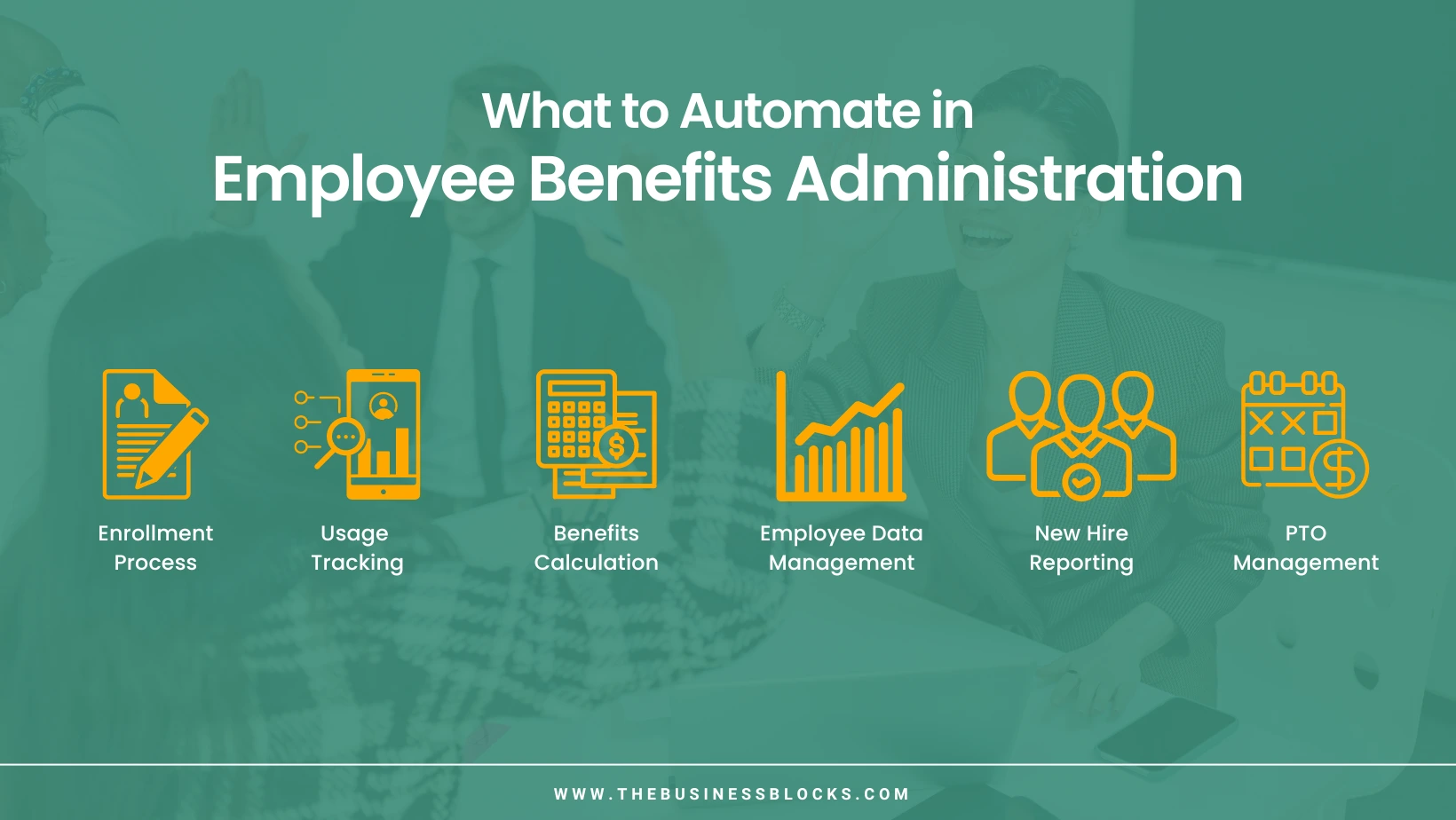
A company’s HR department handles many tasks, especially administrative tasks and all activities concerning employees, from recruiting, onboarding, training, managing health insurance and care, employee benefits, and offboarding.
Some of these repetitive tasks may involve working with many benefits administration software and software, several vendors and providers, and probably many forms and tons of paperwork.
Using benefits administration software can help organizations automate some, if not all, of these tasks. Some of the tasks that can be automated, according to EverythingBenefits.com, are:
Enrollment Process
Automating enrollment processes eliminates repetitive actions and tasks and ensures that each enrollment activity will be done correctly, swiftly, and efficiently. Submission of the enrollment data can also be done automatically through integrations.
Usage Tracking
Having the means to track the availability and usage of benefits can benefit both the employer and employee by allowing the easy perusal of what benefits are still available and providing employers with the means to gauge usage and determine what benefits are preferred by the staff.
Benefits Calculation
If done automatically through a platform, anything that involves calculation can eliminate human errors, allow faster results generation, and ensure accuracy.
Employee Data Management
Maintaining a digital solution to record and manage data ensures a safe, secure, and central repository. With this, capturing and editing of information can be easily performed. Generating reports and obtaining important information can be facilitated.
New Hire Reporting
Automating recruiting and the hiring process can save a lot of time and ensure that all the essential tasks can be done, such as submitting requirements and documents and providing all important information that a new hire should know about. Line managers and
HR personnel can also be reminded of key dates and tasks that can ensure that a proper and efficient onboarding will be done.
PTO Management
Regarding PTO management, having a benefits administration system where application, tracking, and approval functions are present will remove this process from HR. It will instead empower the employees and managers to manage time off and leaves themselves.
How can benefits administration software elevate a company’s HR team?
Time-Saver
When manual processes, tasks, and form-filling are eliminated, HR partners and employees benefit. Employees can access benefits data through online accounts, portals, and self-service facilities. Automated benefits administration software can also facilitate time-off applications, benefits, and reimbursement options without needing a benefits administrator to focus on these requests.
Error Elimination
With the use of benefits administration software, the possibility of human errors due to issues with data capture and manual calculation is minimized. These tools also assure the organizations that the data and forms are securely stored and can be recovered and accessed at any time.
Convenience
With digital transformation and implementation, most benefits management activities can be done on-site or remotely, providing a convenient way of administering and managing employee benefits. Paperwork and other infrastructure associated with obsolete means of doing things can be avoided.
The availability of data, portals, and functions through mobile sites and smartphones also makes things easy for employees to use their benefits. This enhances the employee’s experience, especially if the benefits administration software is easy to use and navigate.
Compliance
Most of the time, conforming to laws, policies, and the huge number of government regulations that govern benefits are handled automatically in this benefits administration software, giving proper guidance for employees and HR practitioners in ensuring that everything is done in compliance with the company and government policies.
Visit our post on The Top Benefits Administration Software to learn more about benefits administration products.
What factors should be considered for selecting the best benefits administration software for a company?

When implementing HR automated solutions such as benefits administration, the processes involving benefits management would not only be simplified but can also be streamlined and automated.
The growth of the company and plans to scale should also be considered because this directly affects and influences recruitment, employee engagement, and retention.
HR partners should also consider the processes these platforms should cater to and the relationships that need to be considered, such as vendors and brokers.
The company should also evaluate data integration capabilities and functions the platform should support so that all employee benefits can be done via the platform.
If an organization is already using an HRIS platform with a built-in benefits administration, it could be an advantage, provided that the module can fully support all the benefits management requirements of the company.
Otherwise, choosing the best benefits administration as a standalone platform can be done if this software can be integrated with the company’s existing technology stack.
Are there Disadvantages to using Benefits Administration Software?
List of Cons in Implementing Benefits Administration Software:
Learning how to use this software and roll it out in an organization might take time.
Subscribing to a service or purchasing a platform might be too costly.
The functions could be too specialized, especially when considering the geological location and laws that govern the area and country where a company is located.
Having a workplace setup where employees are located in different parts of the globe could be challenging because each location’s laws and policies should be considered.
The Wrap
Benefits administration is a very important aspect of running a business, especially since this affects the workforce directly, and using software to manage and administer benefits will greatly impact an organization.
When evaluating and choosing the perfect employee benefits software for a company, many factors come into play. What is important is the needs and experiences of both the employees and HR partners should be front and center when determining what platform will be utilized.
Your Guide to Workforce Management Statistics, Trends, and the Market (2024)
Why should you consider reviewing the statistics and trends in your market when it comes to workforce management? That’s because an astute manager will have to use these stats and data sets to justify how they can keep their business and team ahead of the market.
Workforce management refers to the way employers reserve and strategically allocate employees and resources.
Tasks such as attendance management and adherence to the constantly changing legislation and regulations at work are also part of workforce management. Ultimately, the aim is to maximize productivity and minimize risks.
What are the latest statistics on the usage and growth of the workforce management software market?
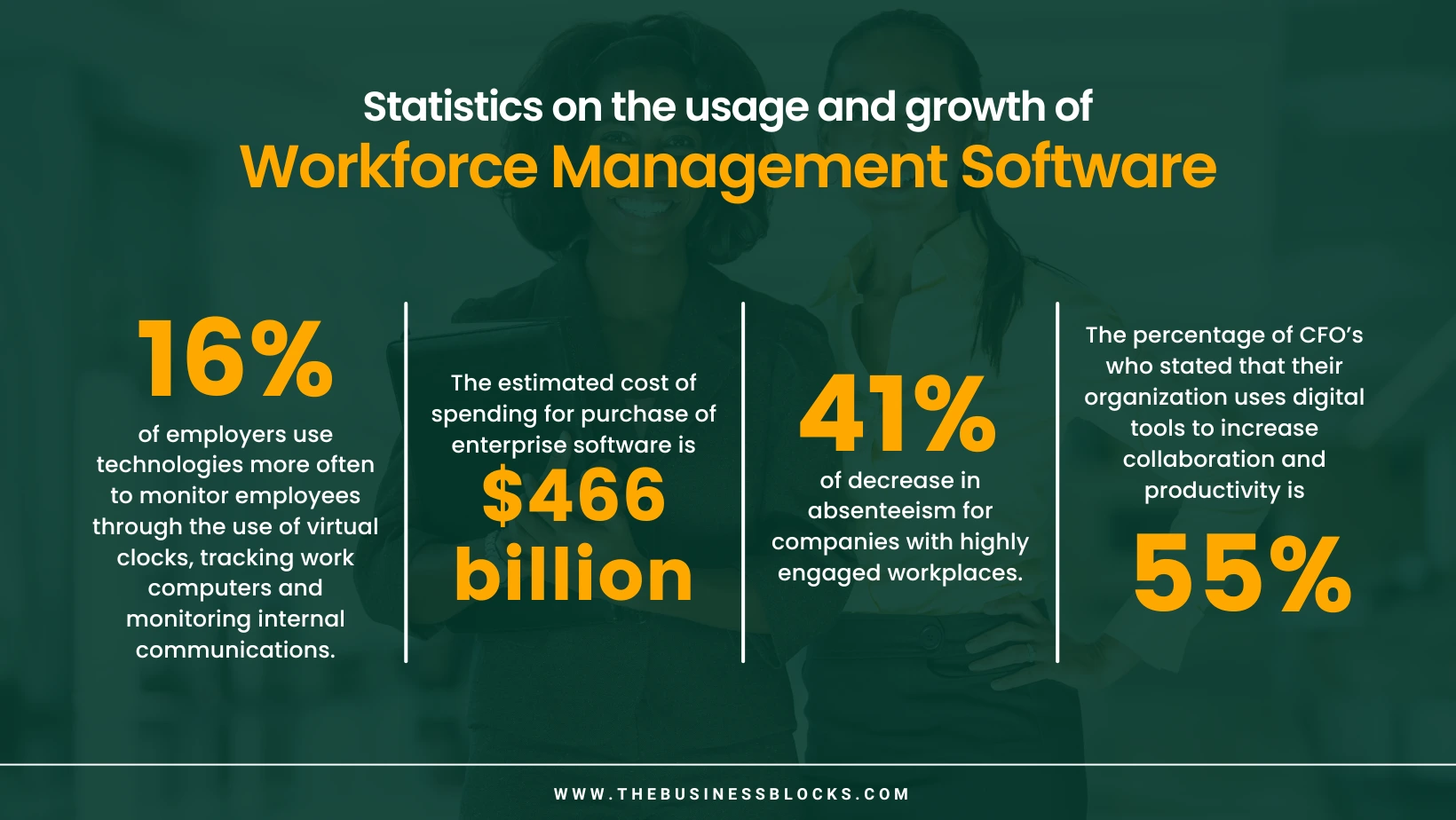
Here are the latest workforce management statistics and trends, workforce market statistics, and workforce management software, gathered by WebinarCare.com from sources like CXC Global, Select Hub, Forbes, 7 SHifts, BLS, Statista, Continuum Cloud and NetSuite:
16% – the percentage of employers that use technologies more often to monitor employees through virtual clocks, tracking the use of work computers, and monitoring emails and internal communications.
11% – the percentage of growth that is expected of the workforce management software market
3% – the
percentage of the projected increase in IT and technology stack spending to address the increase in demand forbusiness analytics and workforce management software
Growth Statistics for Workforce Management
11% – the percentage of growth for the workforce management software market as predicted for the next five years
$466 billion – estimated cost of spending for the purchase of enterprise software
75% – the percentage of HR managers and practitioners that use recruiting and workforce software.
44% – the percentage of remote workers in the United States
70% – the percentage of the distributed workforce that has worked remotely at least once a week
Engagement and Employee Retention Statistics
20% – the percentage of employees that say they are engaged with their work
63.3% – percentage out of more than 600 US businesses that say retaining employees is harder than hiring them
41% – the percentage of decrease in absenteeism for companies and workplaces with high employee engagement
15% – the percentage of engaged employees in the workplace
73% – the percentage of employees that would consider leaving their jobs for the right offer
74% – the percentage of employees that would accept a pay cut for a chance to work at their ideal job
Workforce Management Employee Statistics
31% of organizations reported that they conduct employee surveys
47% – the percentage of employers with the capacities or processes in place to handle staffing crisis
38% – the percentage of employees that feel exhausted when faced with week-long virtual meetings which are detrimental to employee satisfaction
75% – the rate of employees that felt more socially isolated with remote work set-up
86% – the rate of employees that state that they feel the need to prove to bosses they are working hard
73% – the
percentage of CFOsthat agree or strongly agree that their organization uses digital tools and workforce software to help streamline and automate operations.
55% – the
percentage of CFOswho stated that their organization uses digital workforce management software and tools to increase collaboration and productivity
Company Statistics who Use WFMS’s
88% – percentage of organizations who reported that they already adopted time and attendance, and workforce management applications
18% – average percentage of workforce turnover every year for a company
6% – percentage of reduction on staff for a business due to poor performance
13% – the percentage of employees who choose to leave on their own volition.
3% – the
percentage of annual high-performerturnover rate
28% – the percentage of workers who rejected a job offer or leave within the first 90 days of joining a company due to company culture
36% – the percentage of American employees who say their manager doesn’t understand how to lead a team
40% – the percentage of employees who said getting a question answered from HR managers took too long
69% – the percentage of employees that are more likely to stay with the company for at least three years after a positive onboarding experience
How does your company compare?
Statistics are important for HR managers because they can provide valuable insights into the performance and productivity of employees, as well as the overall health and effectiveness of the organization. Statistics can be used to measure employee engagement, turnover, absenteeism, and other key metrics that are critical to the success of an organization.
Check out our guide on workforce management solutions.
What are the latest trends in workforce management solutions:

According to WorkForce.com, the following are some of the predicted technology trends and factors that may shape the workforce management market:
Labor compliance and minimum wage changes
Changes in policies, rates, and market demands will mean that organizations should be prepared to adapt and adjust. Having the platforms to quickly implement the changes will be beneficial in ensuring that employers will be able to comply.
COVID-19 Recovery and employee well-being
The COVID-19 pandemic has changed the world and our lives for good. As businesses worldwide slowly struggle to adjust to a new level of normalcy, the focus has not been given to employee health, especially on mental health and work-life balance.
Auto employee scheduling
Anyone who has worked in retail knows the anxiety that attends workforce scheduling for both manager and employee. Through workforce management platforms, advanced algorithms can be utilized so that organizations can easily schedule staff shifts, including shift building and shift filling.
Advanced workforce analytics trends and open APIs
With APIs, companies that use multiple workforce management software can implement a seamless flow of processes and data. By maximizing integration and connectivity capabilities, organizations can build a digital ecosystem designed to automate most of the day-to-day tasks that help staff with their tasks.
Cloud, mobility, and ease of use
When tools are accessible and user-friendly, the rate of adoption and frequency of use can be guaranteed to be high. This gives the assurance to organizations that invest in these platforms that the use of this workforce management software can be maximized to their full potential, thereby improving efficiency and productivity.
When workforce management is integrated into the software ecosystem of a company, it aids businesses in improving the relationship between employees, elevating customer service, and creating positive financial gains.
It also entails recognizing and focusing on a business’ priorities and anticipating the risks and challenges of human resources; when these are identified early on, the organization can take the appropriate steps to mitigate the risks and maintain the efficiency of the organization.
Moreover, staff scheduling, time and task management, data collection and analysis, and compliance with laws and regulations are just some of the tasks that are also important to workforce management.
Different goals for different businesses
Every employer has a different goal, but the majority of businesses, regardless of the size, market segment, or industry to which they belong, share the desire and need to improve their efficiency and productivity.
With regards to compliance, a business needs to be able to stay on top of things with an awareness of the changing laws and policies.
Workforce management, therefore, is very crucial, because employers with inconsistent policies, shortcomings, and inefficient procedures may experience a shortage of staff, issues with safety and regulations, inefficient services or production, increased cost, violations of compliance and regulations, and high employee turnover rates.
Workforce management software can be used to design and plan strategies that could affect the resources by using historical data and machine learning to predict and forecast staffing needs as well as potential issues.
It may also help the organization, and the staff in particular, in terms of time tracking and attendance management. For staffing, workforce management software can be utilized to devise schedules that best fit the forecast model.
A company’s workforce management solutions should be able to support the following requirements or features:
- Time tracking
- Time-Off Management
- Resource forecasting
- Staff scheduling
- Time management, including overtime
- Regulatory compliance
- Workforce analytics
- Mobile accessibility and employee self-service portal
It would be beneficial for an organization if an effective and apt workforce management solution is in place, and if the chosen platform is used, implemented, and regulated effectively could produce outstanding results. It may help the organization in reducing and controlling costs.
Issues such as overstaffing and excessive overtime can be avoided or reduced by utilizing a platform that can predict the need for labor and provide optimal solutions. Some platforms can inform employers of the correlation and immediate effect of schedule changes on the compound annual growth rate company budget.
Workforce management software may also allow companies to ensure that payroll processing will be done with greater accuracy and reliability because it can easily analyze and apply factors such as hourly labor and rates and recognize overtime and other work patterns.
Mundane and repetitive data capture and tedious manual calculation can be minimized or eliminated.
With the use of this workforce management software, an organization may also see an improvement in efficiency and productivity. With staff data, employers can ascertain and identify benchmarks that may allow them to compare their performance against other players in the same industry or region.
Having this analysis can set them up to have a corrective plan to address issues and identify areas where improvements can be made.
This workforce management software can enable companies in designing and implementing optimal staff schedules. Shift changes, vacancies, surplus, or lack of resources can be easily determined. The ease of designing schedules based on several parameters like department, location, season, and other issues can empower organizations and mitigate staffing problems.
Finally, compliance risks can be minimized or eliminated. When parameters that allow organizations to conform to policies and adhere to compliance and regulations are managed and monitored are fed and stored in this workforce management software, these can be considered when analyzing staffing requirements, enabling employers to address issues without compromising compliance.
What are the key elements of workforce planning and strategy?

In terms of providing value and delivering impact, businesses that invest deeply in their employees are better equipped to thrive in the volatile business environment. To achieve this, workforce management plays a seminal part in the main corporate business strategy.
Business leaders are aware that human resources are the most important asset of the organization. Investing in their talents and developing skills can have a positive impact on their efficiency, productivity, profitability, and loyalty. This then leads to a propitious impact on the company.
The changes in the economic environment that has transpired in the last few years have led to a change in the workforce planning process.
Now that business leaders are recognizing HR’s tactical role in the preparation of their businesses to adapt to the changing business landscape, they will see the analysis and planning of the workforce as an integral approach to the professional development and honing of talent and the management of the organization.
Workforce management software market
This includes the formulation of strategies to enhance skills, promote the mobility of talent, and formulate succession plans.
Workforce planning involves the process of identifying and meeting the needs and business goals of the company when it comes to its diverse workforce that enables the organization to achieve its objectives.
This may include the identification of current and upcoming requirements in staffing, the development of strategies for recruiting and retaining talent, and the alignment of the workforce to the objectives of the organization.
The planning of the workforce can help to ensure that the company has a suitable number and type of employees who have the necessary experience and skills to support the operation of the company and to achieve its objectives.
A workforce strategy provides and delineates a comprehensive plan on how an organization will respond to its workforce needs to support the overall goal of the business.
This may consist of the analysis of current and upcoming staffing needs, the development of strategies for attracting and retaining talent, as well as the alignment of the workforce to the mission and long-term plans of the organization.
A workforce strategy helps ensure that the company has the optimal number of employees with the right skill sets and expertise necessary to support operations and achieve its objectives. A well-thought-out strategy for the workforce can improve the organization’s performance, competitiveness, and productivity.
When designing the approach for workforce planning and the allocation of resources to the management of the workforce, the following major contributing factors may guide the business: organizational and business goals, strategies and policies, process alignment and reengineering, talent acquisition and enhancement, financial planning, and technical resources analysis.
What are the 3 phases of workforce management?
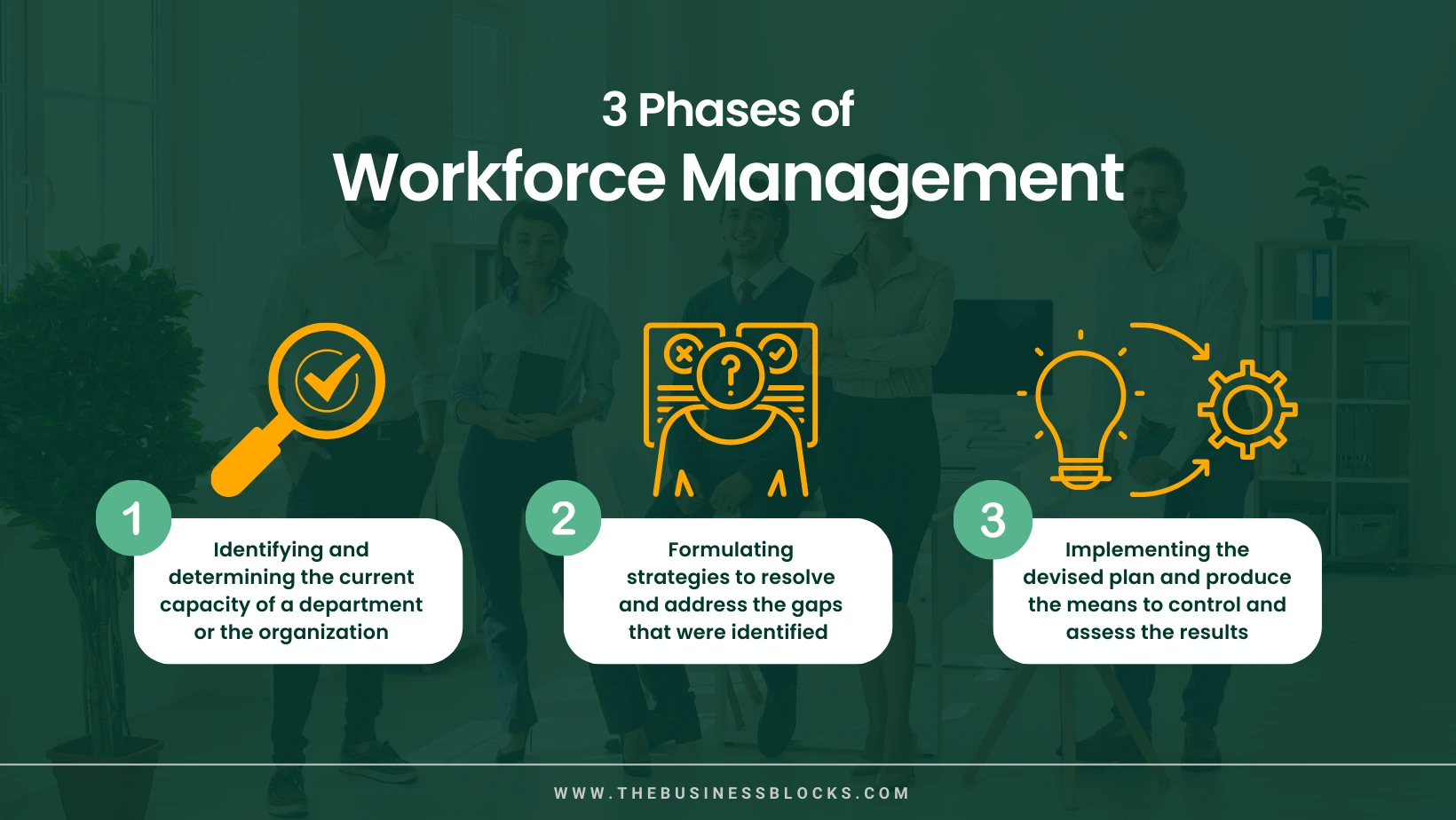
Some organizations adopt a three-phase process in implementing effective workforce management. The three phases usually consist of the following activities: analysis of workforce capacity plus identification of skill gaps, development of an action plan, and implementation of this action plan.
The first step is usually concerned with identifying and determining the current capacity of a department or the organization as a whole in terms of workforce resources including potential and projected changes to this count. It also involves stacking up requirements and needs against the supply.
For the second step, organizations should formulate strategies to resolve and address the gaps that were identified in the first step. Employers should come up with plans to strategize and design measures and business goals.
Action points that will result from the data analysis could be translated into activities such as recruiting, training, restructuring, re-engineering, or procurement of additional workforce management software and tools.
Finally, the last step is to carry out and implement that devised plan and produce the means to control and assess the results whether they are effective or not.
How much is the average or typical cost of WMS?
According to CrozDesk, the average software pricing for workforce management platforms range from $2.50 per user per month for small- to medium-tier businesses and may cost about $72.00 per user per month for enterprise tiers. However, some of the vendors only provide custom quotes or quote-based pricing based on the organization size and features that will be availed.
The leading vendors or companies in this field are ADP, Papaya Global, Oracle, Ceridian, Fuse, and Workday.
There are a lot of workforce management platforms to choose from, depending on the size of the organization.
For individuals, there are free wares such as RescueTime and Toggl. Other platforms include EverHour, HubSTaff, Deputy, and TimeCamp; subscription prices range from $2.50 to $7.00 per user per month.
For small to medium enterprises, the following platforms are available: ClickTime, BambooHR, Skedulo, Deputo, Planday, When I Work, Calamari, and Gusto, among others. Subscription fees range from $1.5 to $39.00 per user per month.
Visit our post on The Top Workforce Management Software to learn more about platforms under the staff management domain.
Bonus Facts:
- Data and statistical models can be used to forecast employee needs.
- The Analytics employee data can be used to identify new markets, develop marketing strategies and increase customer loyalty. This data analytics workforce management system (WMS) can also track employee attendance, overtime, and vacation time.
- A workforce analytics dashboard can be used to track employee performance and identify areas of improvement. Workforce analytics projects action of employee turnover can help organizations make better decisions when recruiting and retaining employees.
- Predictive analytics implement workforce planning to anticipate the future needs of an organization. Predictive workforce analytics force analytics can be used better to understand employee engagement, job satisfaction, and motivation.
- Workforce analytics evolving to address the challenges of today’s business environment, such as understanding how best to manage a remote workforce and measuring employee engagement. As you implement workforce analytics, it will help you optimize your work, improve employee productivity, and build better customer experiences.
Frequently Asked Questions About Your Guide to Workforce Management Statistics, Trends, and the Market (2024)
Q: What is the Workforce Management Data?
A: Workforce Management Data is an in-depth analysis and review of workforce management systems, trends, and statistics.
Q: How important is strategic workforce planning?
A: Strategic workforce planning is a critical part of any organization’s long-term success. It helps to develop and implement a comprehensive strategy for the recruitment, training, and retention of personnel to ensure that organizations have the right people with the right skills at the right time.
Q: What are the strategic workforce planning activities?
A: normal strategic workforce planning activities encompass a variety of tasks, including market analysis, capacity planning, talent assessment and reengineering, talent acquisition and enhancement, financial planning, and technical resources analysis.
Q: Can workforce analytics software help with strategic workforce planning?
A: Yes, there are many software solutions available that can provide insights into a company’s current and future workforce needs.
Q: What should I look for when choosing workforce analytics tools for workforce management?
A: When choosing workforce analytics tools, it is important to consider the features offered. Look for tools that allow you to track employee performance, attendance, and leave data, analyze trends in hiring and attrition rates, monitor labor costs, manage scheduling activities, and generate reports.
The Wrap
Companies of all types and sizes and from almost every industry may benefit from workforce management solutions and the implementation of workforce management software. It can help alleviate stress on employees and mitigate staffing and scheduling issues, thereby increasing productivity, employee engagement, and retention.
Leaders should use statistics in their business because it provides valuable information that can aid in decision-making, helps identify trends and patterns in data, and can be used to measure the effectiveness of different strategies and tactics.
By analyzing data and using statistical methods, leaders can gain a deeper understanding of their customers, market, and operations, which can help them make better decisions, improve performance, and drive growth.
Additionally, statistics can be used to forecast future trends and identify potential risks, allowing leaders to proactively address issues and capitalize on opportunities.
Overall, using statistics can help leaders make more informed and data-driven decisions, which can lead to increased efficiency and success in their business.

